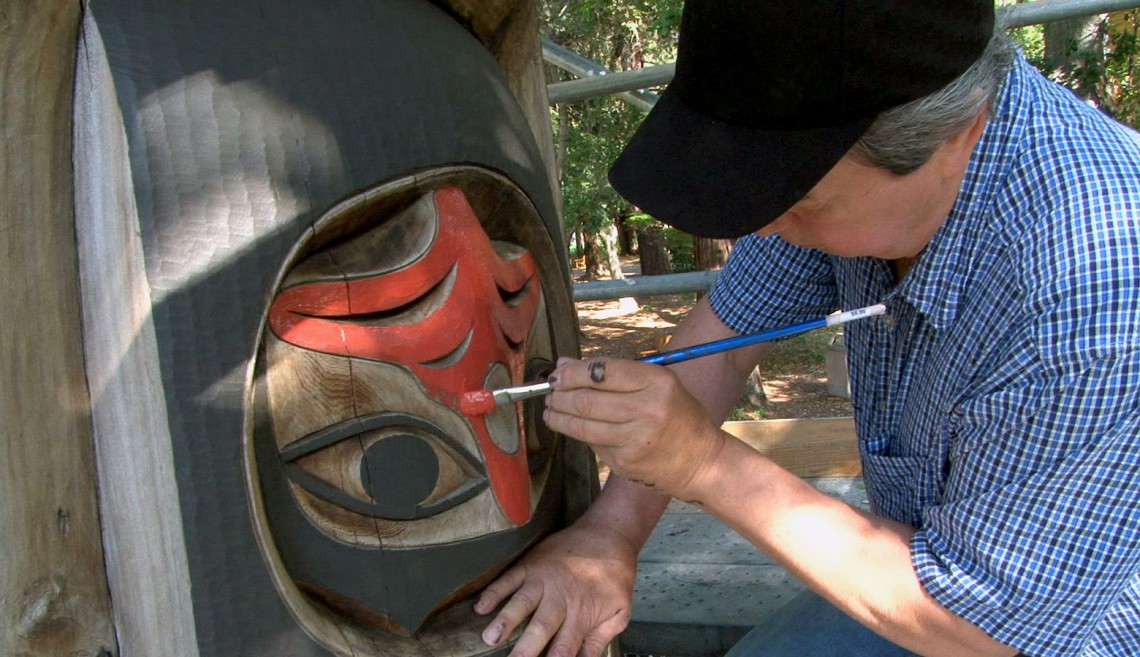
Pacific Northwest artists restore Stanford totem poles to their original grandeur
Among the outdoor sculptures spread throughout Stanford's campus are two towering giants. After weathering years of sun, moisture and insects, the totem poles are receiving needed restoration.
The first totem pole installed on the Stanford campus rests close to the Oval, tucked into a nearby grove of trees. Art Thompson finished the Nuu-chah-nulth style pole, titled Boo-Qwilla, in 1995. The second pole, The Stanford Legacy by Don Yeomans, sits adjacent to the Law School’s Crown Quad and was completed in 2002. Carved in the traditional Haida style, Yeomans’ pole rises 40 feet in the air.
At the time of his passing, he said, ‘If there is restoration to be done to my poles, I want you to do it.’ I consider that a big honor and I want to respect that.
Over the years, the totem poles’ paint had noticeably faded. In order to restore their vibrancy, artists John Livingston and his wife, Maxine Matilpi, traveled from Victoria, British Columbia, to help with the restoration. Livingston, having acted as assistant carver on both pieces, has had a long relationship with the poles.
“Art Thompson was a dear friend of mine who is gone now,” Livingston said. “Arthur passed away in 2003, so at the time of his passing, he said, ‘If there is restoration to be done to my poles, I want you to do it.’ I consider that a big honor and I want to respect that.”
To uphold the integrity and appearance of the totem poles, it was important to match the original hues.
“The colors are very traditional,” Livingston said. “These are the same colors and tones that have been used for hundreds of years.” The estates of Don Yeomans and Art Thompson approved the paint selection.
The work on the poles isn’t strictly cosmetic. Elizabeth Saetta, an outdoor sculpture technician for the Cantor Arts Center, thoroughly cleaned the poles, treated them for insects and, after the painting was finished, applied a topcoat specifically designed for totem poles.
“The most important thing, especially with exterior pieces, is preventive maintenance,” she said. “You are trying to keep water and insects out, and do it in a way that doesn’t visually change the pole.”
Clan or family crests are often carved into totem poles to honor families and their history. In the case of The Stanford Legacy, Yeomans symbolized the university’s origin by including figures to represent the Stanford family. Both Leland and Jane Stanford are represented, and on top of the pole sits a child with angel wings, a tribute to Leland Stanford Jr.
Read more about the conservation of the totem at the Cantor blog Cross-Sections.
http://cantorscience.wordpress.com/2013/05/30/totem-treatments/
